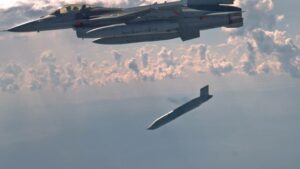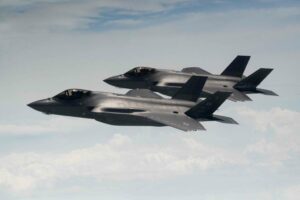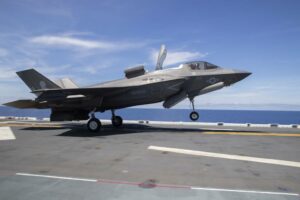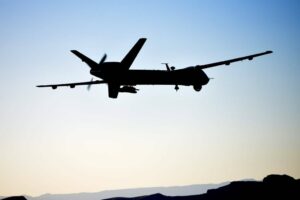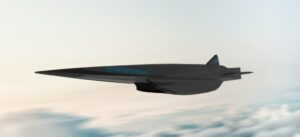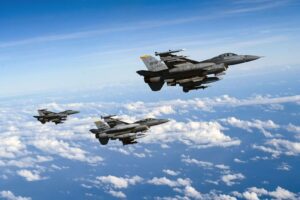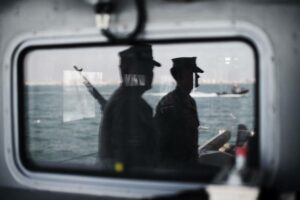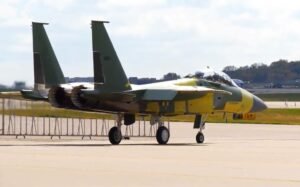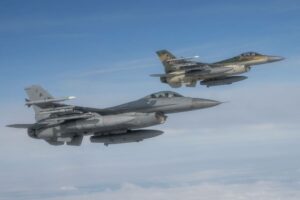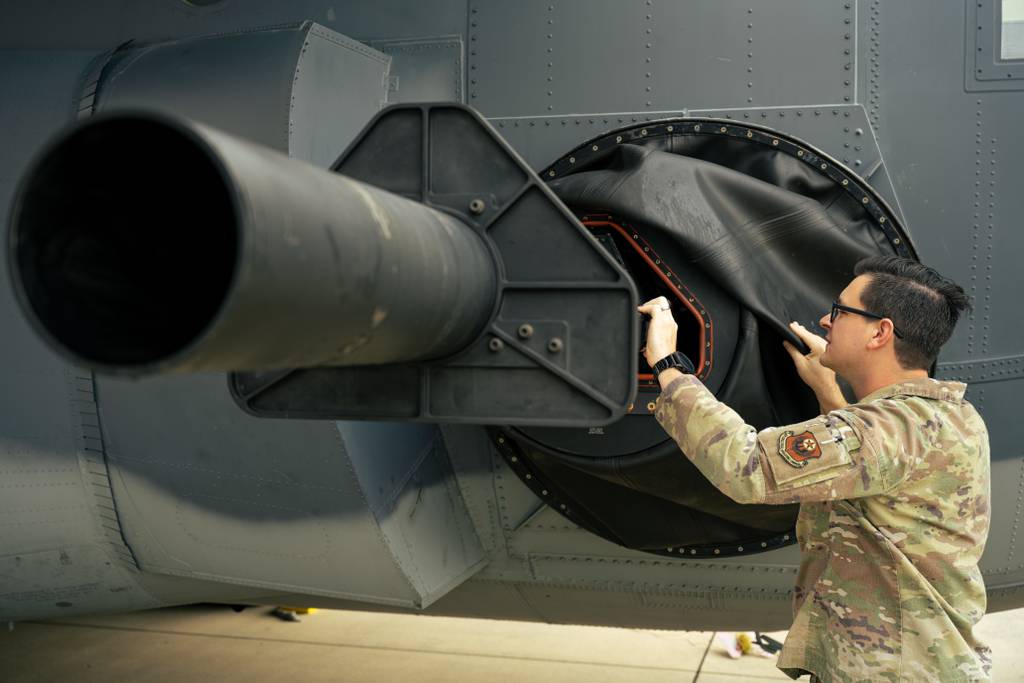
WASHINGTON — The days of the AC-130J Ghostrider’s hefty 105mm cannon may be numbered.
U.S. Air Force Special Operations Command confirmed to Defense News it is considering removing this howitzer-sized weapon, used to carry out punishing strikes on ground targets, from the aircraft as early as 2026. The idea comes as the service rethinks how it will use the heavily armed gunship following the end of the Afghanistan War and amid a greater focus on America’s top adversary, China.
The changes could amount to a major shift in how the Air Force’s famed gunship would support special operations forces and the military writ large in a sophisticated war against an advanced adversary such as China.
The command is also eyeing other changes to the Ghostrider, including the addition of small cruise missiles for standoff strikes; an advanced active electronically scanned array radar for improved tracking of ground targets; and a series of communications and networking upgrades to better tie into the joint force’s command-and-control networks.
“To field operational concepts and technologies relevant in the current and future strategic competition environments, AFSOC is currently assessing the capabilities of the AC-130J Ghostrider,” the command said in a statement to Defense News. “The goal of this review is to enhance the lethality, versatility and adaptability of the AC-130J in a wide range of operational scenarios while ensuring it remains a vital asset within AFSOC.”
The service hasn’t made a final decision on the fate of the 105mm cannon and what — if anything — would replace it, an Air Force official told Defense News on the condition of anonymity in order to speak candidly. AFSOC is using research and development funding to conduct an analysis through 2025.
The official noted the command now does not have the procurement funds to remove the cannon and to either patch up the hole or replace the weapon, meaning the gun wouldn’t get pulled off until 2026 at the earliest.
“In a scenario where you’re not able to just have free rein and fly over a friendly location for three hours, how do we beat our adversaries at that game?” the official said. “If they take away our ability to loiter for extended periods of time, what’s our counter-punch?”
A spokesperson for the House Armed Services Committee’s majority staff declined to comment on the potential gunship changes under consideration.
A source in the gunship community, who spoke to Defense News on condition of anonymity because he was not authorized to talk to the press, said AFSOC has all but decided to remove the 105mm cannon.
“It’s a fait accompli,” he said.
The source added that removing the massive cannon from the plane’s left side would create an imbalance in the aircraft’s center of gravity, among other structural issues. The price tag to remove the weapon and fix the airframe across the fleet would likely be in the millions of dollars, he explained.
“When you cut a hole in that airplane, it’s a major structural intrusion,” he said. “You can’t just yank the gun out of it and fly around with that hole. You’ve got to redesign the fuselage where it was cut out.”
John Venable, a former F-16 pilot and senior defense fellow at the Heritage Foundation think tank, told Defense News the AC-130J would not survive a war against China and that the command is right to rethink its mission. However, he added, the command should leave the 105mm gun in place on a portion of the fleet to conduct missions in permissive environments like the Middle East.
“This is a significant move,” Venable said. “In a high-intensity fight where you’ve got air-to-air threats and long-range [surface-to-air missiles], it would be relegated to a position — much like the [E-8] JSTARS, much like the [E-3 Sentry] AWACS — to where it would be almost combat ineffective in its current role. We will still need AC-130s to fly top cover in Africa; the same thing with our troops in Syria.”
But while the Air Force’s efforts to retire the A-10 Warthog aircraft led to years of conflict with lawmakers until recently, Venable doubts the service will run into similar opposition on Capitol Hill over potential AC-130 changes.
AFSOC has ruled out replacing the cannon with a high-energy laser currently undergoing tests and once considered for the AC-130J.
Another Air Force official, speaking on the condition of anonymity in order to talk freely, explained that placing a laser where the 105mm gun is now yields so much air turbulence that it would upset the laser’s beam. And that official threw cold water on the idea of an AC-130J one day going into battle armed with a laser.
The laser research has “been quite a lengthy program,” the official noted. “Our intent with [the airborne high-energy laser] right now is to continue and finish the demonstration for [the Office of the Secretary of Defense], and we will see if we are able to actually pick it up as a weapon system. Right now, it doesn’t look like we might. We just don’t know; the decision has not been made yet. But in short, the laser can’t go in where the 105[mm cannon] is.”
Rethinking the ‘Angel of Death’
The AC-130J is the fourth and latest version of the gunship series sometimes nicknamed the “Angel of Death” for its withering amount of firepower. The aircraft first saw action during the Vietnam War. And the U.S. military frequently used AC-130s during the wars in Iraq and Afghanistan, particularly on close air support missions and major operations such as the battles of Fallujah.
The Ghostrider started to arrive at AFSOC in 2016, and it reached initial operating capability the following year. It is a heavily modified version of the Lockheed Martin-made C-130J, outfitted with twin cannons — a 30mm cannon that can fire up to 200 rounds per minute alongside the 105mm weapon — and the ability to carry precision-guided munitions such as the AGM-176 Griffin, AGM-114 Hellfire, GBU-39 Small Diameter Bomb and GBU-69 Small Glide Munition.
Former AFSOC head Lt. Gen. Bradley Heithold pushed for the AC-130J to have the 105mm cannon alongside the 30mm weapon, telling reporters in a 2015 conversation: “I want two guns.”
Both cannons are mounted on the left of the AC-130J, and the aircraft is typically meant to fly in counterclockwise loops over the target area — sometimes for hours — as its gunners pound enemy positions.
But the Pentagon has been slowly dialing back the scope it originally planned for the Ghostrider, each of which cost $165 million. AFSOC originally wants a fleet of 37 Ghostriders to replace the now-retired AC-130H Spectre, AC-130U Spooky and AC-130W Stinger II aircraft, but last year cut off procurement at 30.
AFSOC said it isn’t planning to further reduce the number of AC-130Js.
Former AFSOC head Lt. Gen. Jim Slife — the nominee to be the service’s next vice chief of staff — ordered the command to look at whether the 105mm cannon should be removed from the Ghostrider as part of the fiscal 2023 program objective memorandum. His successor, Lt. Gen. Tony Bauernfeind, has continued this review.
The first Air Force official said a combination of factors led to a reconsideration of the Ghostrider’s role.
“What does the future fight look like?” the Air Force official said. “Do we need the 105[mm cannon]? … We don’t want to pigeonhole ourselves in strictly special operations. That’s where our expertise lies, [but] we also want to expand capabilities and offer something up to the joint force as well.”
Tight budgets also played a role, he said, although AFSOC is still figuring out what the potential costs or savings a change to the weapon might yield.
If small cruise missiles are added to the AC-130J, the official said, the crew could eject them from the gunship’s ramp to be launched — potentially as palletized munitions, in which a container of multiple cruise missiles is slid out of a cargo plane and then fired in a barrage. Or, the official added, the missiles could be mounted and launched from the Ghostrider’s wings.
AFSOC said these cruise missiles would allow strikes on both fixed and mobile targets, and allow the AC-130J to engage enemies from a safer distance. AFSOC has not yet decided which specific missiles might fill this role.
The active electronically scanned array radar under consideration for the AC-130J would be more sensitive, scan faster and have greater resistance to jamming, while also allowing the aircraft to better discriminate between targets, AFSOC said. It would also support multiple missions such as air-to-air search, air-to-ground targeting, mapping of the ground, and weather detection.
And the adaptive mission networking advancements that might be added to the AC-130J would let it better share critical information with other friendly aircraft or forces, as well as receive real-time updates on the battlefield.
The potential removal of the 105mm weapon also comes after 17 gunships in the fleet received upgraded cannons. Engineers from the Naval Surface Warfare Center designed and developed that latest version, dubbed GAU-XX, and delivered the weapons in January 2022.
The first Air Force official said the AC-130J’s focus isn’t entirely shifting to standoff strike capability, and it will still be able to provide close air support, even without a 105mm cannon.
“Close air support is what we’ve always done since our beginnings, and it’s something that we will continue to do,” he said. “Our guys on the ground anticipate and expect us to … provide the same high level of support that we’ve always provided them. It’s not shifting focus from one to another, but it’s expanding capabilities.”
Stephen Losey is the air warfare reporter for Defense News. He previously covered leadership and personnel issues at Air Force Times, and the Pentagon, special operations and air warfare at Military.com. He has traveled to the Middle East to cover U.S. Air Force operations.
- SEO Powered Content & PR Distribution. Get Amplified Today.
- PlatoData.Network Vertical Generative Ai. Empower Yourself. Access Here.
- PlatoAiStream. Web3 Intelligence. Knowledge Amplified. Access Here.
- PlatoESG. Carbon, CleanTech, Energy, Environment, Solar, Waste Management. Access Here.
- PlatoHealth. Biotech and Clinical Trials Intelligence. Access Here.
- Source: https://www.defensenews.com/air/2023/11/07/us-air-force-may-remove-105mm-cannon-from-ac-130-gunship/
- :has
- :is
- :not
- :where
- $UP
- 10
- 17
- 17th
- 1st
- 200
- 2015
- 2016
- 2022
- 2023
- 2025
- 2026
- 28
- 30
- 7
- 70
- a
- ability
- Able
- across
- Action
- active
- actually
- adaptive
- added
- addition
- advanced
- advancements
- AFGHANISTAN
- africa
- After
- against
- AIR
- Air Force
- air-to-air
- aircraft
- Airplane
- All
- allow
- Allowing
- almost
- alongside
- also
- Although
- always
- Amid
- among
- amount
- an
- analysis
- and
- Anonymity
- Another
- anticipate
- anything
- ARE
- AREA
- armed
- around
- Array
- AS
- Assessing
- asset
- At
- authorized
- away
- back
- barrage
- base
- Battle
- Battlefield
- battles
- BE
- Beam
- beat
- because
- been
- Better
- between
- bomb
- both
- Budgets
- but
- CAN
- capabilities
- capability
- capitol
- Cargo
- carry
- Center
- change
- Changes
- chief
- China
- class
- Close
- cold
- COM
- combat
- combination
- comes
- comment
- Communications
- community
- competition
- concepts
- condition
- Conduct
- conducts
- CONFIRMED
- conflict
- consideration
- considered
- considering
- Container
- continue
- continued
- Conversation
- Cost
- Costs
- could
- cover
- covered
- create
- crew
- critical
- cruise
- Current
- Currently
- Cut
- day
- Days
- decided
- decision
- Defense
- delivered
- designed
- Detection
- developed
- Development
- distance
- do
- does
- Doesn’t
- dollars
- done
- Dont
- dubbed
- during
- each
- earliest
- Early
- East
- efforts
- either
- electronically
- end
- enemies
- engage
- Engineers
- enhance
- ensuring
- entirely
- environments
- Even
- Expand
- expanding
- expect
- expertise
- explained
- factors
- famed
- faster
- fate
- fellow
- field
- fight
- fill
- final
- finish
- Fire
- fired
- First
- Fiscal
- Fix
- fixed
- FLEET
- Focus
- following
- For
- Force
- Forces
- Former
- Foundation
- Fourth
- Free
- freely
- frequently
- friendly
- from
- funding
- funds
- further
- future
- game
- Gen
- get
- GhostRider
- Go
- goal
- going
- got
- gravity
- greater
- Griffin
- Ground
- GUNS
- hannah
- Have
- he
- head
- heavily
- heritage
- High
- his
- Hole
- HOURS
- House
- How
- However
- HTTPS
- hurricane
- idea
- if
- ii
- images
- imbalance
- improved
- in
- Including
- information
- initial
- intent
- into
- iraq
- issues
- IT
- ITS
- January
- Japan
- Jim
- joint
- jpg
- just
- Know
- large
- laser
- Last
- Last Year
- latest
- launched
- lawmakers
- Leadership
- Leave
- Led
- left
- let
- Level
- lies
- like
- likely
- location
- Look
- look like
- made
- major
- Majority
- mapping
- massive
- May..
- meaning
- meant
- Memorandum
- Middle
- Middle East
- might
- Military
- million
- millions
- minute
- missiles
- Mission
- missions
- Mobile
- modified
- more
- move
- much
- multiple
- Need
- networking
- networks
- news
- next
- noted
- nov
- now
- number
- numbered
- objective
- of
- off
- offer
- Office
- official
- Ohio
- on
- once
- ONE
- operating
- operational
- Operations
- opposition
- or
- order
- originally
- Other
- our
- ourselves
- out
- over
- part
- particularly
- Patch
- pentagon
- per
- periods
- Personnel
- pick
- pilot
- Place
- placing
- plane
- planned
- planning
- plato
- Plato Data Intelligence
- PlatoData
- played
- position
- positions
- potential
- potentially
- pound
- press
- previously
- price
- procurement
- Program
- provide
- provided
- pushed
- quite
- radar
- Ramp
- range
- reached
- real-time
- receive
- received
- recently
- redesign
- reduce
- relevant
- remains
- removal
- remove
- Removed
- removing
- replace
- reporter
- research
- research and development
- Resistance
- review
- right
- Role
- rounds
- ruled
- Run
- s
- safer
- Said
- same
- Savings
- saw
- scan
- scenario
- scenarios
- Search
- secretary
- see
- senior
- sensitive
- sept
- Series
- service
- Services
- Share
- shift
- SHIFTING
- Short
- should
- side
- significant
- similar
- since
- small
- So
- something
- sometimes
- sophisticated
- Source
- speak
- speaking
- special
- specific
- Spectre
- spokesperson
- Staff
- started
- Statement
- Still
- Strategic
- strike
- Strikes
- structural
- such
- support
- Surface
- survive
- Syria
- system
- TAG
- Take
- Talk
- tank
- Target
- targeting
- targets
- Technologies
- telling
- tests
- that
- The
- The Future
- the joint
- Them
- then
- These
- they
- thing
- think
- think tank
- this
- threats
- three
- Through
- TIE
- time
- times
- to
- told
- Tony
- top
- Tracking
- Training
- traveled
- turbulence
- twin
- two
- typically
- u.s.
- U.S. Air Force
- under
- undergoing
- until
- Updates
- upgraded
- upgrades
- us
- use
- used
- using
- versatility
- version
- vice
- Vietnam
- vital
- want
- wants
- war
- was
- Water
- we
- Weapons
- Weather
- WELL
- What
- whether
- which
- while
- WHO
- wide
- Wide range
- will
- with
- within
- without
- would
- year
- years
- yet
- Yield
- yields
- you
- zephyrnet




